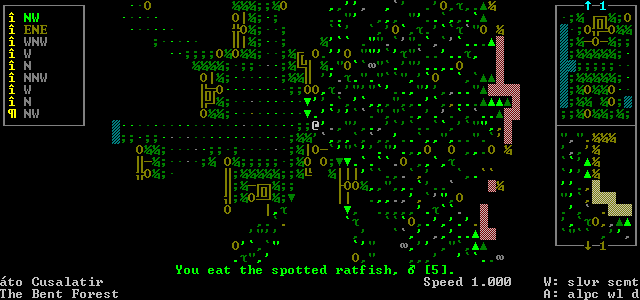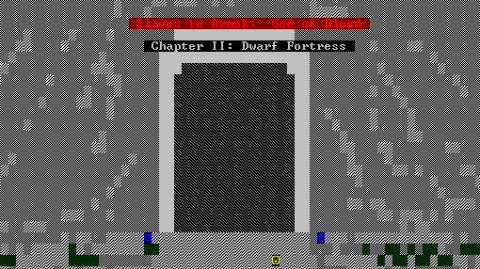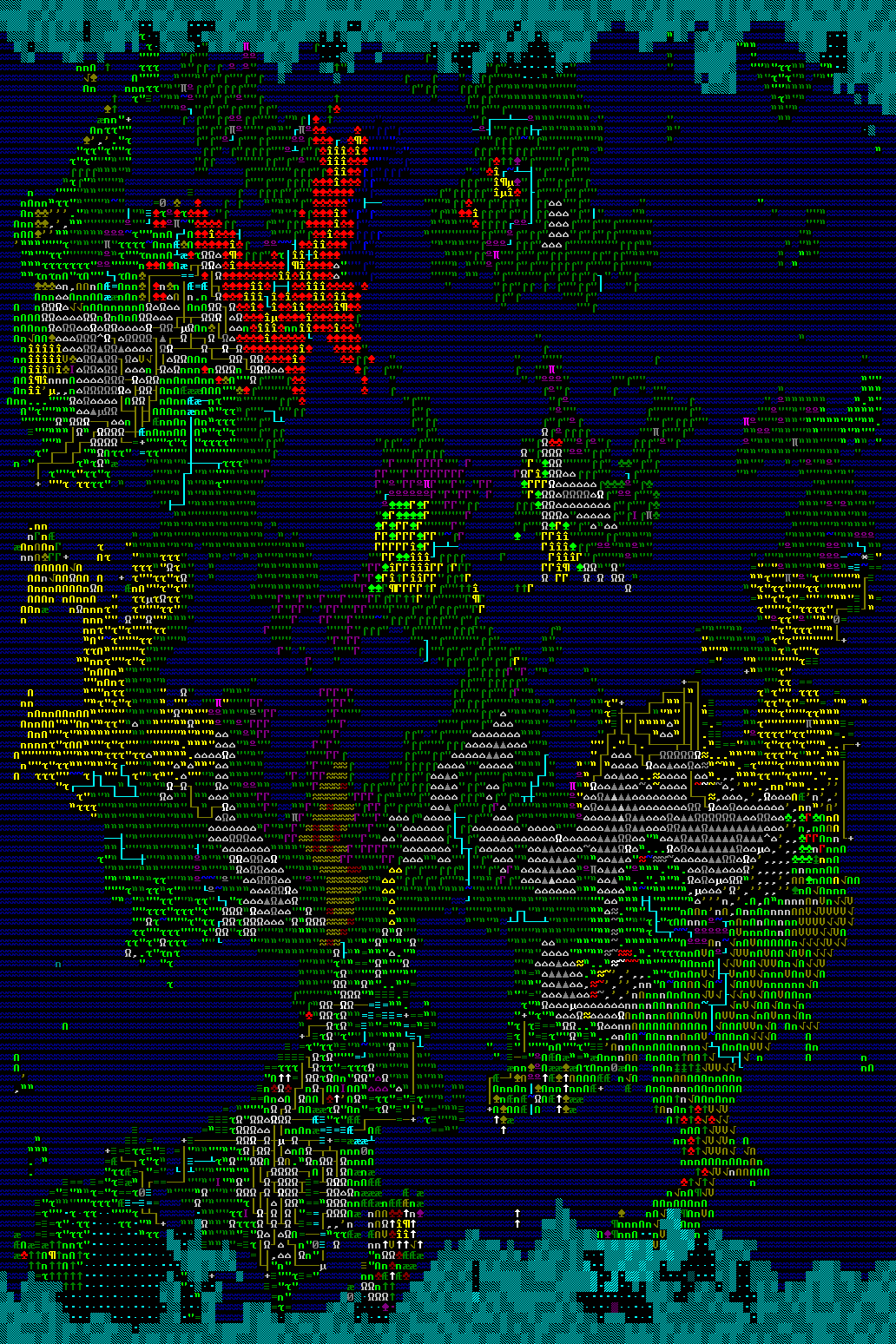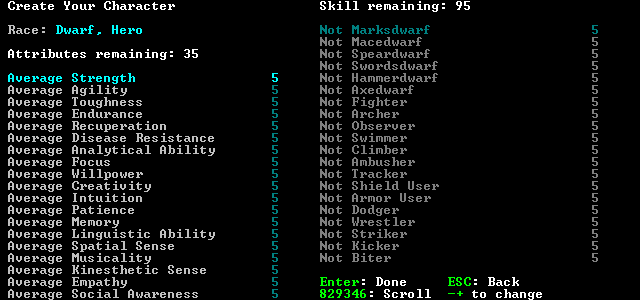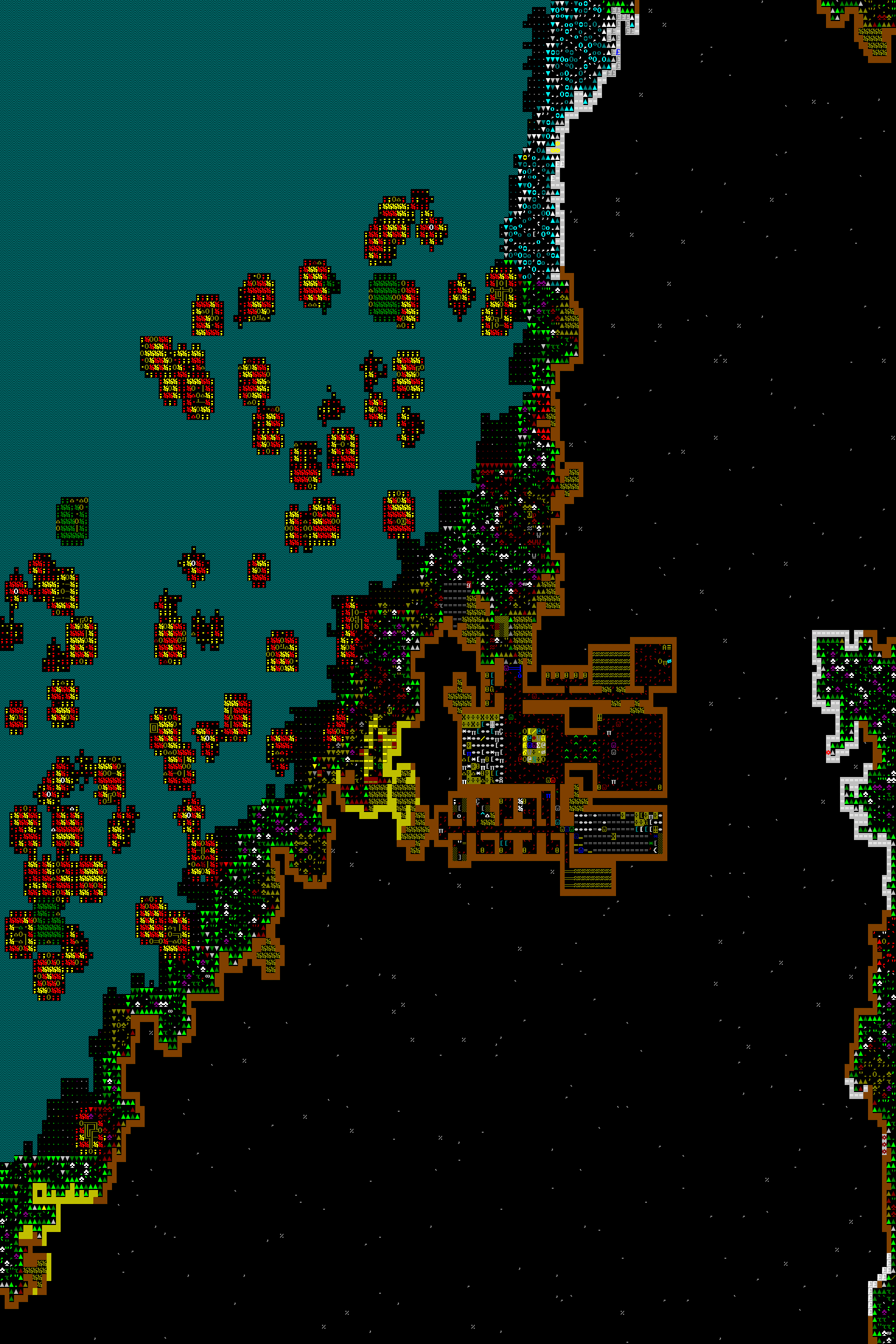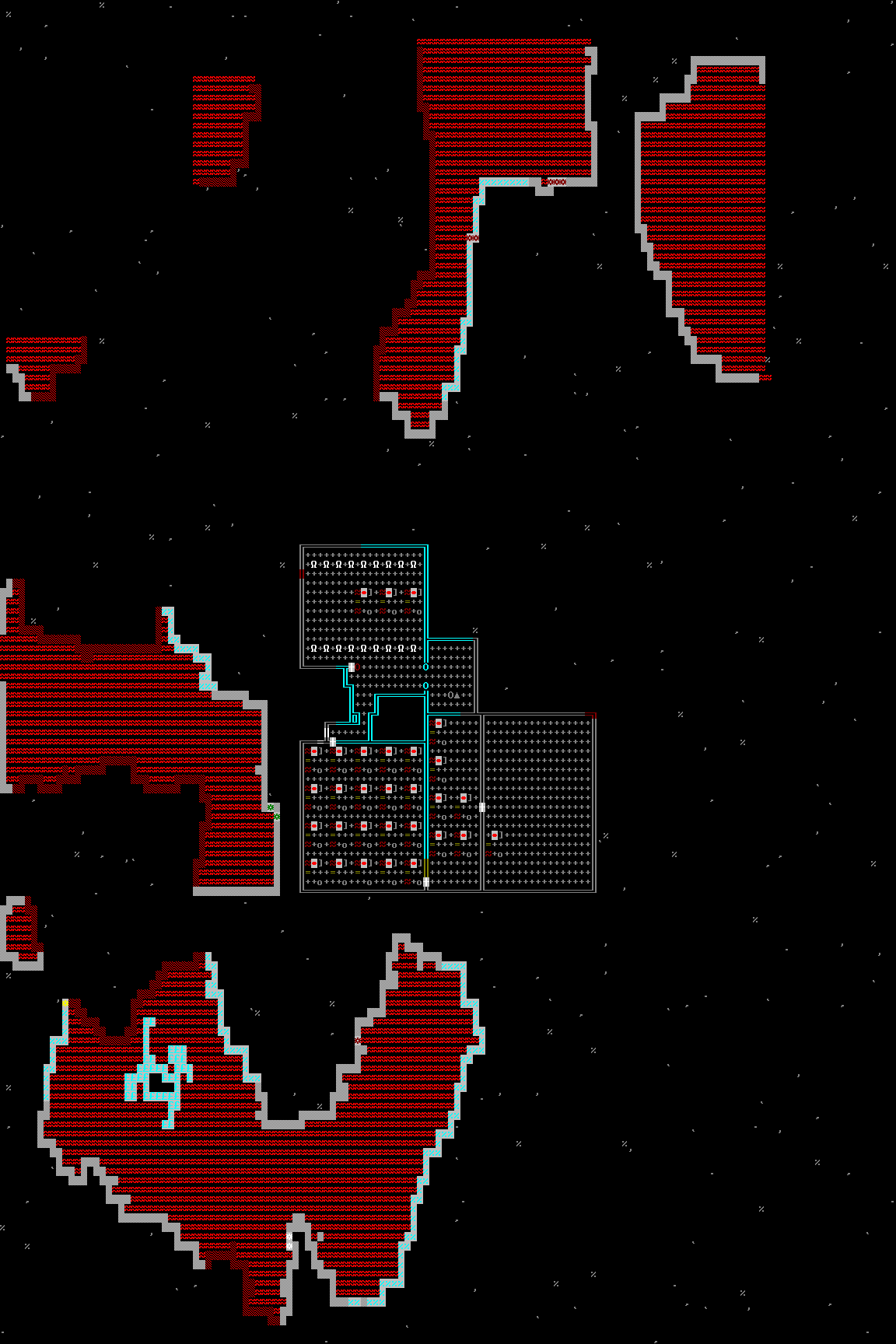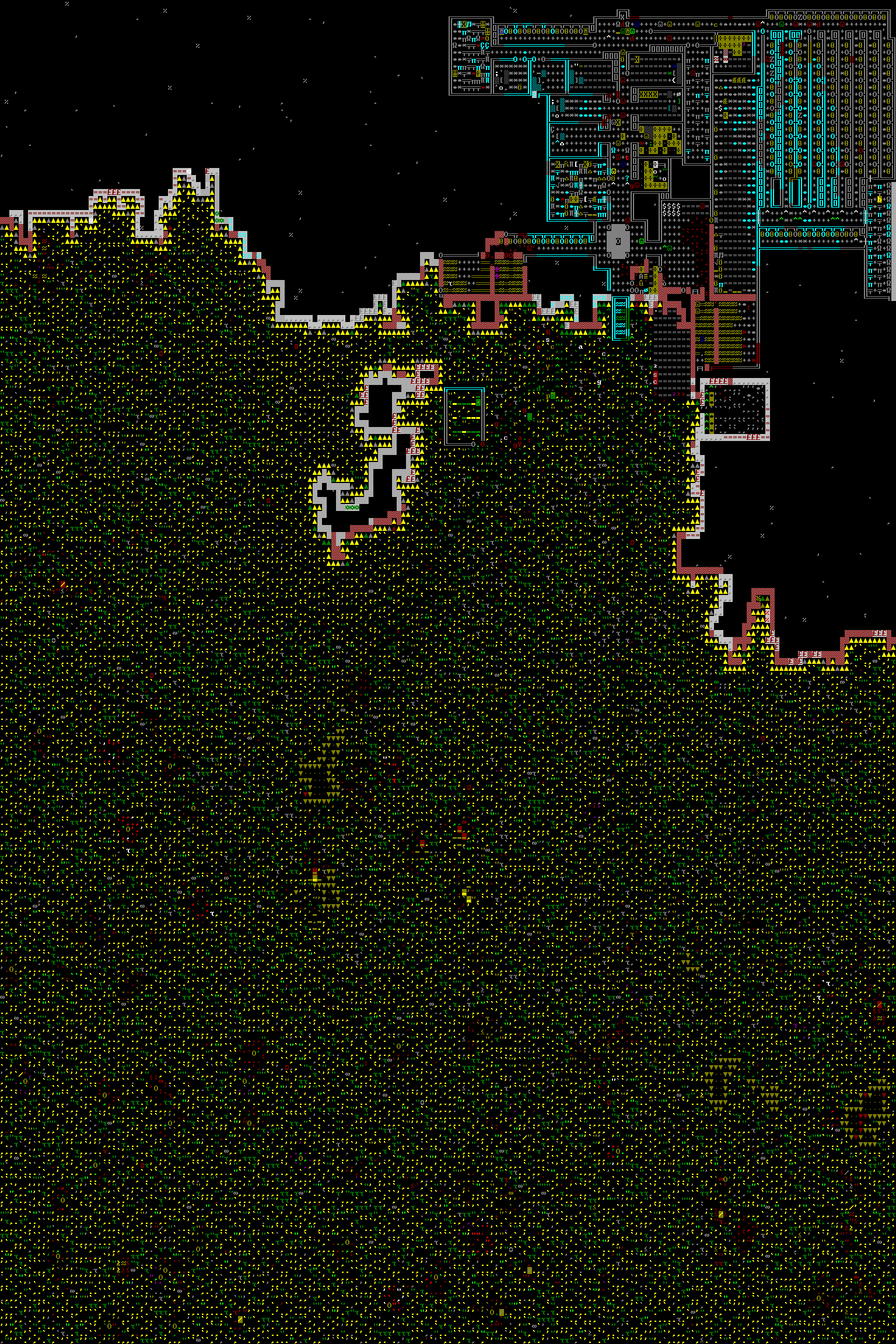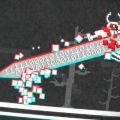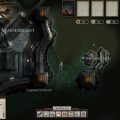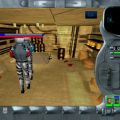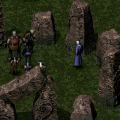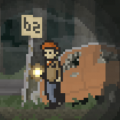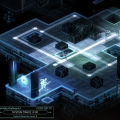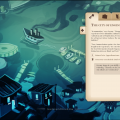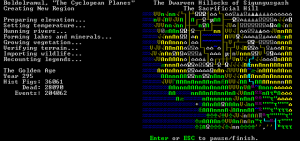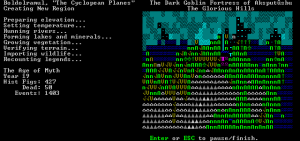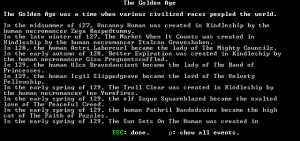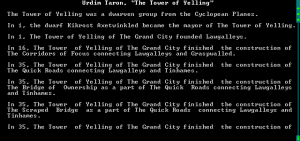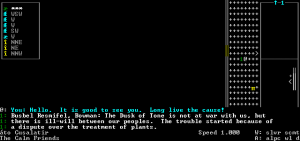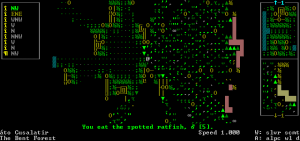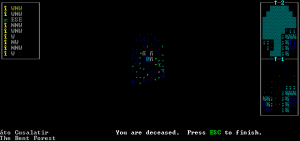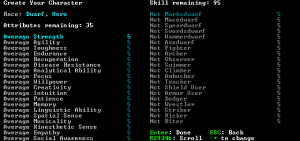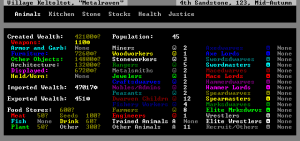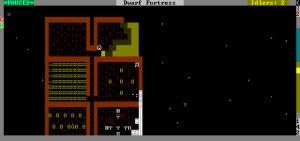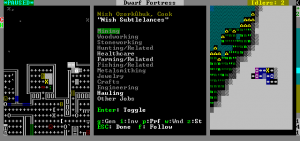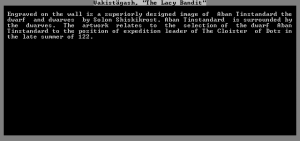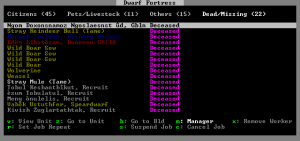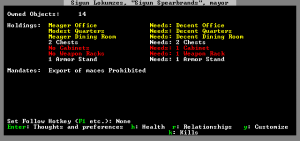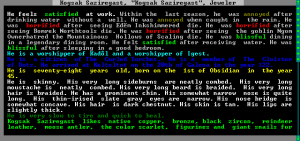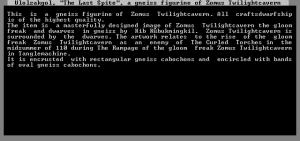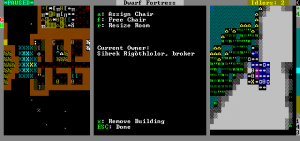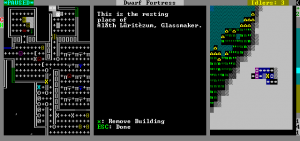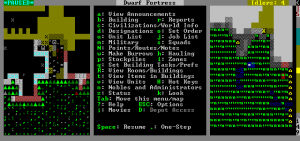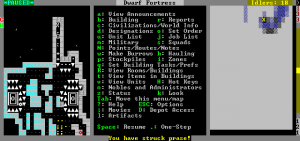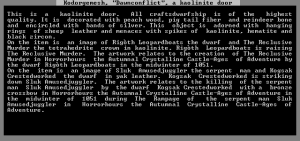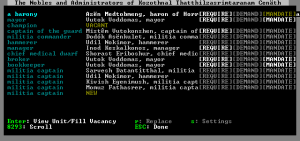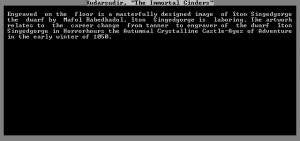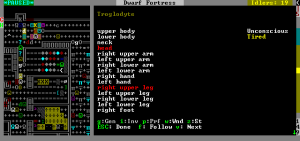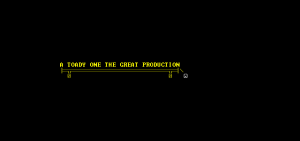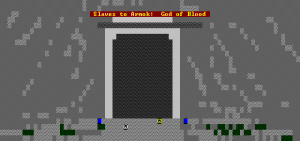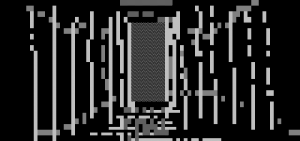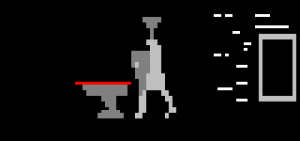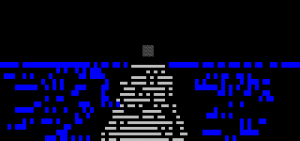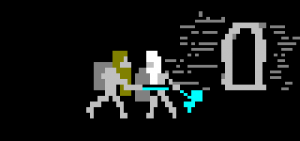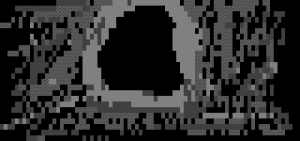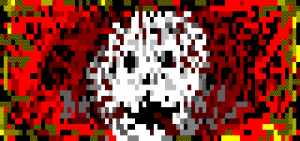The most influential person in the fantasy genre as we understand it today was without a doubt J.R.R. Tolkien. It’s the Lord of the Rings trilogy that inspired countless writers to create their own magical worlds and codified the image of various fantastical races like elves or dwarves in the popular culture. But Tolkien’s greatest achievement wasn’t simply writing books that people liked. No, the most important quality of Tolkien’s whole body of work was world-building: creation of a believable universe with its own myths and legends, many races and civilizations with different cultures and traditions and a long, epic history.
Dwarf Fortress can be described as an ambitious attempt at one-upping Tolkien at his game, as it’s slowly but surely transforming from a game about dwarven colonies setting up and defending a settlement into a complex fantasy world engine with several games built around it. Before you even begin playing, you must tell the game to procedurally generate a setting for your further adventures – and Dwarf Fortress creates it, along with the lives of ancient heroes and powerful beasts, rise and fall of civilizations, military conflicts and conquests of unknown lands. The world goes through different eras and might even go completely extinct, making playing the game in fortress mode impossible until you create another one.
It all might sound like a game too ambitious for its own good – and there are many factors that make it seem even more so: it’s an indie game, it’s been in alpha state for 8 years (and, according to its creators, will probably stay that way for another ten) and it’s a sequel to a project so unfinished it can be only described as a tech demo. But Dwarf Fortress is not a failure like many other overly ambitious projects (e.g. Jurassic Park: Trespasser) – even as an alpha it provides many hours of gameplay, is relatively (for its grand scale) bug-free and is simply a really good game.
The worlds you create will always have a few things in common: the inhabitants will be similar (elves will always oppose chopping down trees, goblins will always hate dwarves etc. as long as they exist) while the laws of physics and magic (currently limited to creatures ranging from gnomes to titans made of different materials, necromancy and the horrors hiding deep underneath the earth) will be the same. Everything else – the geography, the climate, the history, the characters, the civilizations – is random. The world persists between games and your actions can influence it. You can even meet adventurers you’ve retired and visit fortresses you’ve lost or abandoned.
The history of your world is accessible through “Legends” mode, which isn’t really a game but a chronicle of past events – both the things that you’ve done and the things that happened around you. Most of the latter aren’t especially interesting as it’s generally ‘X settled down in Y, travelled to Z and killed A’ but it’s interesting just how much information the game is keeping and the historical maps ale always a pleasure to look at. Also, some of the events generated by the game can be pretty awesome – there are anecdotes among the players about single characters fending off entire armies and small settlements surviving so many dangerous attacks from a persistent titan that they start to worship him as a god.
Historical map exported from the game
Is it an RPG? Is it a strategy game? It’s a multi purpose fantasy world simulator!
Dwarf Fortress can be played like a traditional roguelike through “Adventure” mode. It allows you to create a character (the process includes allocating points towards stats and skills ranging from usual strength and dexterity to the more unique creativity, musicality and spatial awareness) from one of the civilized races and travel the world, fight against monsters and bandits and perform various quests. This mode isn’t very polished yet and might get pretty repetitive once you get the hang of it (although it is currently being aggressively updated and expanded), but the game’s complex engine might keep things interesting.
Playing the Adventure mode consists mostly of exploring various locations (including your old fortresses, if you manage to find them), talking to friendly characters and performing quests for them (that usually involve killing certain creatures, sometimes very dangerous ones). You can travel between locations on an overworld map (while keeping an eye on your character’s thirst, hunger and exhaustion levels) and must seek shelter at night when bogeymen and other assorted evils come out of hiding.
The combat, unlike in most roguelikes, involves targetting specific body parts – often with hilariously violent results. There is absolutely no way to win this game though, and there probably never will be one, given the game’s lack of fixed plot and focus on simulating a world, which will go on no matter how many dragons you slay.
Dwarf Fortress (Windows)
Still, the most important part of Dwarf Fortress is the one that gave the program its name – the “Fortress” mode. It’s a real-time (with active pause) strategy game in which the player commands a group of dwarves attempting to establish a settlement somewhere in the game’s world (an exact place can be picked in the beginning according to several properties like climate or presence of metals). Like in Adventure mode, there is no clear goal and no way to win – but many different ways to lose. A successful fortress will require hunting, fishing and farming for food (that also includes taking care of animals and brewing alcohol), chopping down trees for wood, mining for stone, gems and metal, many different workshops to produce goods, a trading depot to take care of merchant caravans, a military to defend the fortress from many enemies, a hospital to take care of wounded dwarves and more.
Unlike most strategy games, nothing in Dwarf Fortress is abstracted – every unit on the screen represents a single dwarf (with a unique personality and relationships with other characters as well as skills, physical features and mood) who performs tasks the way they’re actually performed. For example, in order to forge an iron sword dwarves have to find an ore of iron, dig it out and carry it to a smelter to create iron bars (provided you have coke or charcoal to operate a smelter – if you don’t, you’ll need to chop a tree and turn the resulting logs to charcoal in a furnace). Those bars are then carried to a forge where a weaponsmith makes a sword out of them, once again requiring charcoal to operate the forge. There is a lot of micromanagement to be done and the bigger your fortress is, the more annoying it might get.
Fortunately, you don’t control each dwarf directly – you just assign them different kinds of labors (woodcutting, brewing, mining etc.) according to their skills and order what needs to be done from different menus. Dwarves will perform those tasks dilligently as long as they’re not busy doing anything else, like sleeping, eating or drinking.
How you build your fortress is entirely up to you, although the exact planning is dependent on your surroundings. Generally speaking, you’ll need to build farms in soil or mud (if there is none of that where you live you need to create some) but you also need to reach stone and metals as those are important resources. There are many different kinds of both and their properties are more or less similar to those of their real world counterparts, so some basic knowledge of geology and metallurgy will be helpful. Ideally, the fortress should be accessible to merchants, easy to expand (migrants can arrive once per season) and easy to defend. There isn’t really one correct way to play Dwarf Fortress – it all depends on the situation, your skills and your creativity.
Map of the top floor of fortress Metalraven and its surrounding
Moody dwarves
Making dwarves rich and protecting them from external threats is not all you do in Dwarf Fortress. The game takes advantage of the personality system and makes it important to your progress: it’s not enough that your dwarves survive, you also need to make them happy as unhappiness may lead to lousy work, lost fights and even insanity. There are many stories among the players documenting ‘tantrum spirals’ when one fight led to another until most of the inhabitants of the fortress were dead.
To prevent catastrophical scenarios like this, you must know what makes dwarves happy (alcohol, art, well-designed furniture), what makes them unhappy (rain, lack of individual bedrooms, seeing others die) as well as the preferences of individual characters who might have an affinity towards different kinds of gems, stone, metal etc. It’s also important to remember certain customs – for example, if the dead are not buried properly, they might come back as ghosts and haunt the living.
No matter how well prepared you are, your tribe might still end up getting wiped out by something you’ll never thought of. You might survive a goblin siege, but what if you’re attacked by a titan? Your economy might be going strong, but what if your chief export is silver and for some strange reason your mayor issues a mandate that forbids selling it? The game’s unofficial motto is ‘losing is fun‘.
Whatever your stance on difficult games is, it’s certain that losing is definitely more fun than what happens to a fortress that survives everything for too many years. Even on the strongest computers, the game is suspectible to what players call ‘FPS death’ – it becomes so overloaded with characters it needs to keep track of (migrants and babies mean that a fortress keeps growing) that it slows down to unbearable frame rates. It might seem odd – given the game’s antiquated presentation – but due to its complexity Dwarf Fortress is a true resource hog.
Magma-powered workshops at the bottom floor of Postsensed, an abandoned fortress
When in Boatmurdered, do as the Boatmurderedans do
The complexity of Dwarf Fortress allows for some truly incredible creations. The game’s fanbase has discovered plenty of so called ‘stupid dwarf tricks’ – difficult and time-consuming inventions exploiting both features and bugs of the game’s engine. They can range from weaponizing a drawbridge (‘dwarven atom smasher’) to building working calculators and simple computers by abusing behavior of minecarts, animals and/or fluids. Most impressively, those computers can be even used to control parts of the fortress.
For those without patience for such things, Dwarf Fortress offers a great potential for emergent storytelling. The game’s scope and size, use of procedural generation and focus on characters with distinct personalities allows many of the sessions to feel like actual stories, despite none of them being written by the game’s authors. There aren’t many games that are able to achieve that – King of Dragon Pass and Crusader Kings 2 come very close, although the former relies heavily on scripted events and the latter uses a fixed world (medieval Europe).
Due to this, the game is quite popular among Let’s Players. This has resulted in one of the most well-known creations of the Dwarf Fortress community: a legacy game in which each player controlled fortress Boatmurdered for one in-game year. The Let’s Play was known for a violent war against the elephants, humorous and often profanity-laden narration (there was even a device named ‘Project Fuck The World’ – a lever which when pulled released a stream of magma into the surroundings) and large amounts of fun (as in “losing is fun”). Boatmurdered was so well-known that it was even referenced in Diablo 3, although some of the things that happened during the game might be a bit confusing to those using the current version, as when it was created the game was much different from newer releases (e.g. there was no way to build up or downwards – only deeper into the side of the mountain).
The ugliest fantasy world around
Dwarf Fortress uses extended ASCII graphics similar to MS-DOS text mode, although it’s possible to load custom tilesets. Everything in the game is controlled with a keyboard (there is no mouse support). The game’s interface leaves some things to be desired, especially given the arbitrariness of which menu is used for what actions. For, example most rooms – bedrooms, barracks, throne rooms etc. – are assigned from the options of a relevant piece of furniture – bed, armor stand, throne etc. – but others like hospitals and animal training areas are assigned through the zones menu. In general, Dwarf Fortress simply doesn’t explain itself very well and playing it for the first time will probably require frequent switching to a browser with a wiki opened.
Surprisingly for a text-based game, Dwarf Fortress has a soundtrack. Unfortunately, it consists only of two (albeit pretty long) guitar tracks composed by Tarn Adams himself. They’re good but obviously get very repetitive given how much of a time sink this game can be. There are no sound effects.
Dwarf Fortress has been released for Windows, Linux and OS X. Those versions are identical, although Windows players have a choice of an SDL version and a legacy terminal-based one which isn’t available for other operating systems. There’s also an option to download older versions of the game for those interested in removed features like extremely overpowered fish (due to a bug: the action of swimming counted as an exercise even for water-dwelling creatures, meaning that fish spent literally all the time exercising), mining adamantine leading to a non-standard game over and a coin-based economy.
Main floor of a relatively large fortress
Dwarf Fortress is a fascinating game with an unimaginably large scope. It’s also one of the few games which provide a complete experience despite being far from finished – one can’t help but wonder what a game this might be when the final release rolls in. It is also an inherently niche game as learning it requires a great deal of patience. No need to be discouraged, though. While every player has his stories of large-scale failure (like a single survivor of a titan attack dying of dehydration in a cage while slowly getting insane from all the miasma around him), setting up a fortress that grows large and survives for a few years isn’t that difficult, provided you choose a good place on the embark screen. Besides, even if you don’t learn how to play Dwarf Fortress, you might at least learn that hematite is the most common ore of iron.
Links:
Official website
Dwarf Fortress Wiki – contains priceless quickstart guides
Bay 12 Forums – main hub of Dwarf Fortress community
Dwarf Fortress on 1d4chan – archives of Dwarf Fortress humor (often related to older versions)
Dwarf Fortress on TV Tropes – comprehensive rundown of everything related to the game and its community
Tarn Adams interview on Altergamer – describes various ideas for future releases
Boatmurdered on Let’s Play Archive – legendary Dwarf Fortress Let’s Play (archived from Something Awful forum)
